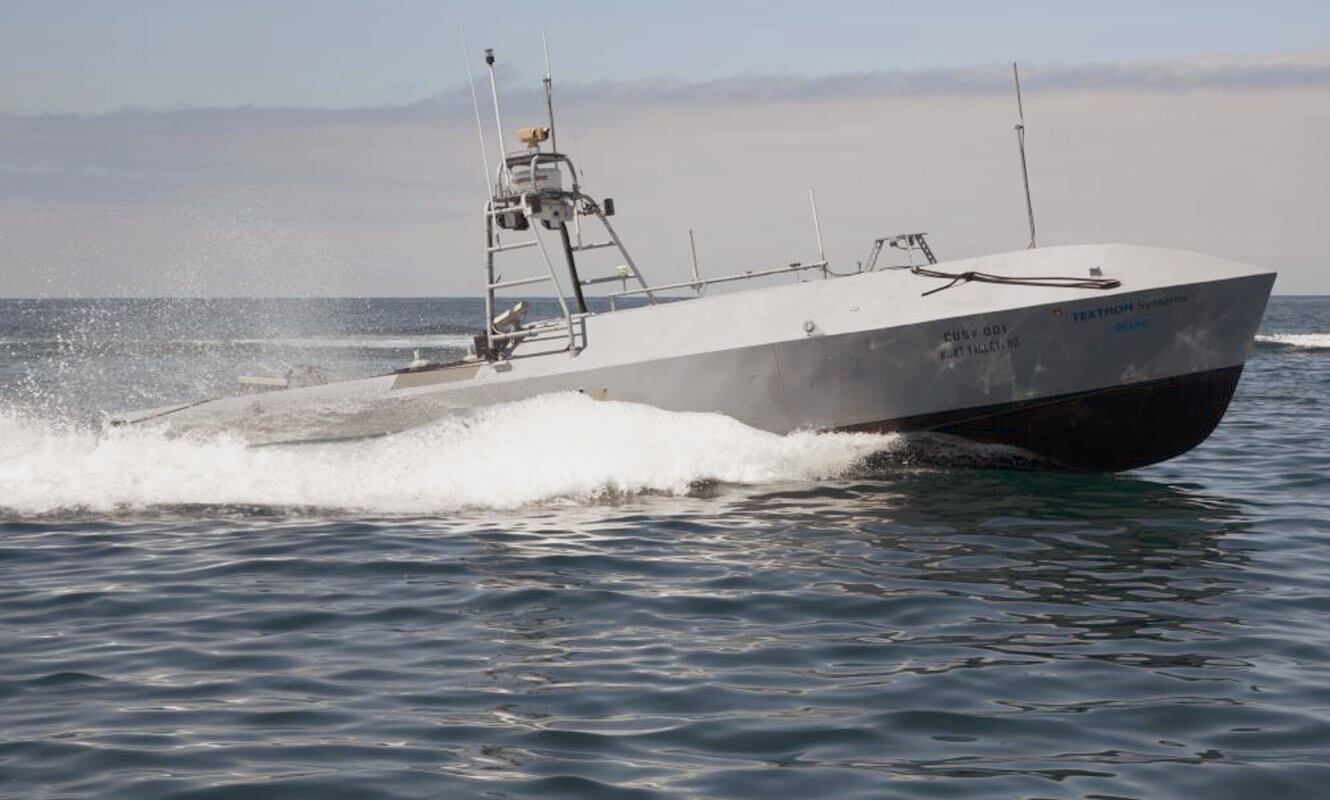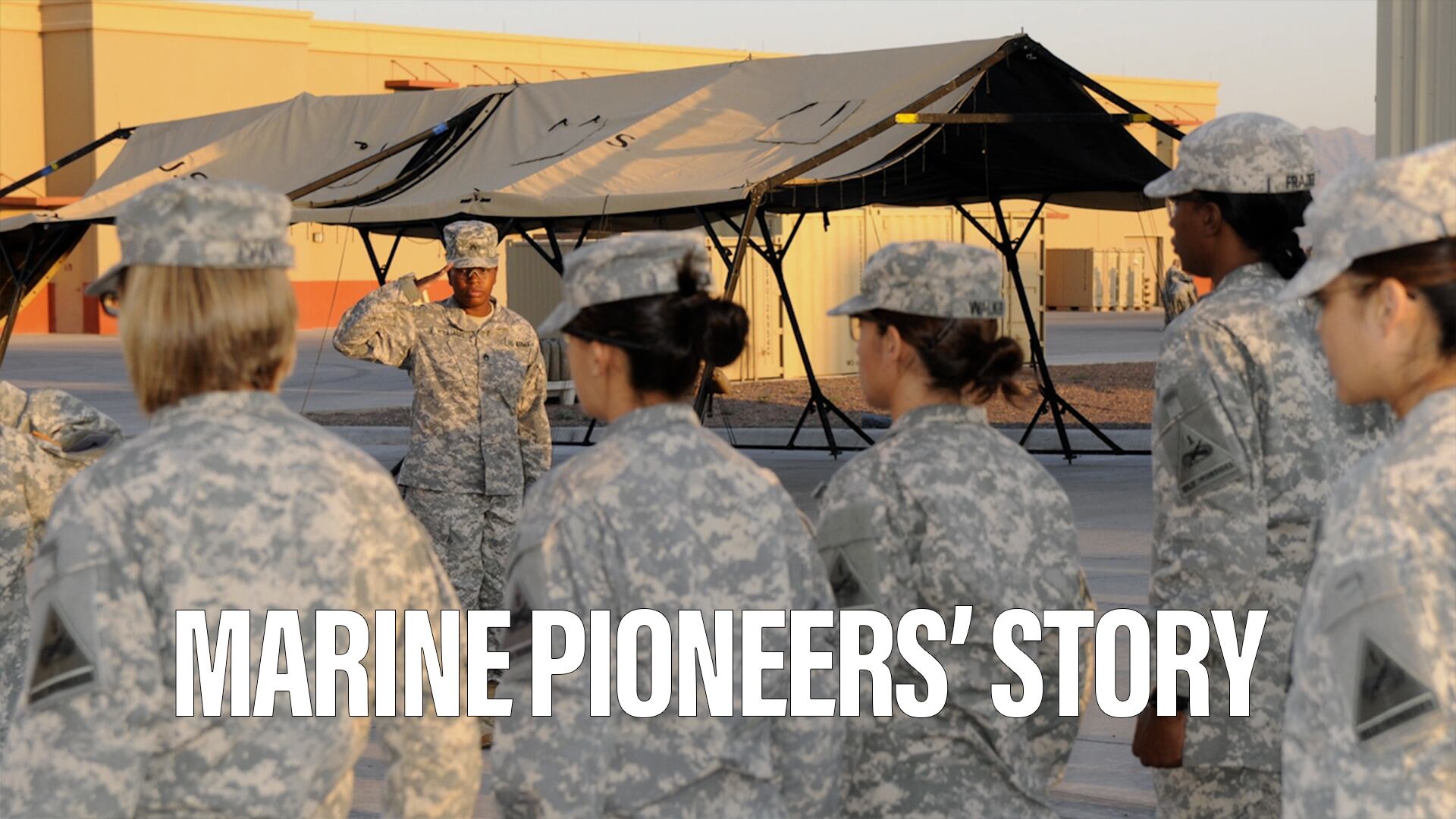LONDON — The U.S. Navy will try to prevent Skynet — the fictional intelligence computer network that attempts to destroy humanity in the “Terminator” series — from becoming a reality as it continues efforts to field evermore capable robots, a Navy official said Monday.
As the service works to build autonomous capabilities, trust is an ever-present concern for those charged with testing and evaluating the safety of the systems they are developing, said Steve Olsen, deputy branch head of the Navy’s mine warfare office. But the developers are keenly aware that overly trusting weapons systems can present serious dangers.
“Trust is something that is difficult to come by with a computer, especially as we start working with our test and evaluation community,” Olsen said. “I’ve worked with our test and evaluation director, and a lot of times it’s: ‘Hey, what’s that thing going to do?’ And I say: 'I don’t know, it’s going to pick the best path.’
RELATED

“And they don’t like that at all because autonomy makes a lot of people nervous. But the flip side of this is that there is one thing that we have to be very careful of, and that’s that we don’t over-trust. Everybody has seen on the news [when people] over-trusted their Tesla car. That is something that we can’t do when we talk about weapons’ system." he added.
“The last thing we want to see is the whole ‘Terminator going crazy’ [scenario], so we’re working very hard to take the salient steps to protect ourselves and others.”
Olsen said the Navy is making great strides in getting autonomous systems to work together to perform complicated tasks, pointing to the Navy’s recent demonstration of single-sortie mine hunting. And central to that is the creation of a common control system, or CCS, from which sailors can operate multiple systems. The problem, however, is the fragmentation of unmanned systems acquisition; there are several different systems in the fleet doing different things, Olsen said.
“One of the biggest challenges we have with autonomy,” Olsen said, “is that all of these unmanned systems go out into acquisition, and the requirements folks have always just said: 'We need it to be an open-systems architecture.’ So industry brings us their version, and the problem is I’ve got 10 different open-systems architectures and none of them work together.
“That’s a huge issue for me. I need a system that can go out, tow sonar or drop [an unmanned underwater vehicle] and also be able to utilize what assets we have in the air to increase situational awareness and perhaps even for obstacle detection and avoidance. This is the main reason CCS was developed, to create that foundation that creates commonality, interoperability and multidomain mission management.’
But to simultaneously control a group of robots that are performing increasingly complex tasks, potentially including firing weapons, the human controller will need to supervise more than manually control the platforms.
“As we move forward, you bring in more information where these systems start working together until ultimately you get to a level where you have more of a mission commander role, where the system has a type of knowledge,” he said.
That’s where trusting, but not over-trusting, comes into play, he added.
RELATED

Time and money
At a conference earlier this year, the Naval Sea Systems Command’s head of unmanned systems, Capt. Pete Small, said the Navy’s increasing jumble of robots was creating an issue from an operational as well as a training and readiness perspective.
“From a manned-machine teaming and sailor-integration perspective, we need a portfolio of systems to do a wide variety of things,” Small said. “We can’t bring a different interface for each platform to our sailors — from a training perspective but also from an integration perspective.
“We might have a destroyer that needs to operate an [unmanned surface vessel] and an [unmanned underwater vehicle] and they all need to be linked back to a shore command center. So we’ve got to have common communications protocols to make that all happen, and we want to reduce the burden on sailors to go do that.”
That’s driving the Navy toward a goal of having one control system to run all the unmanned platforms in the service’s portfolio, but that the goal was far off, Small said.
“The end state is — future state nirvana — would be one set of software that you could do it all on,” he said. “I think that’s a faraway vision. And the challenges are every unmanned system is a little bit different and has its own requirements. And each of the integration points — a destroyer, a shore base or a submarine — has slightly different integration requirements as well."
David B. Larter was the naval warfare reporter for Defense News.








